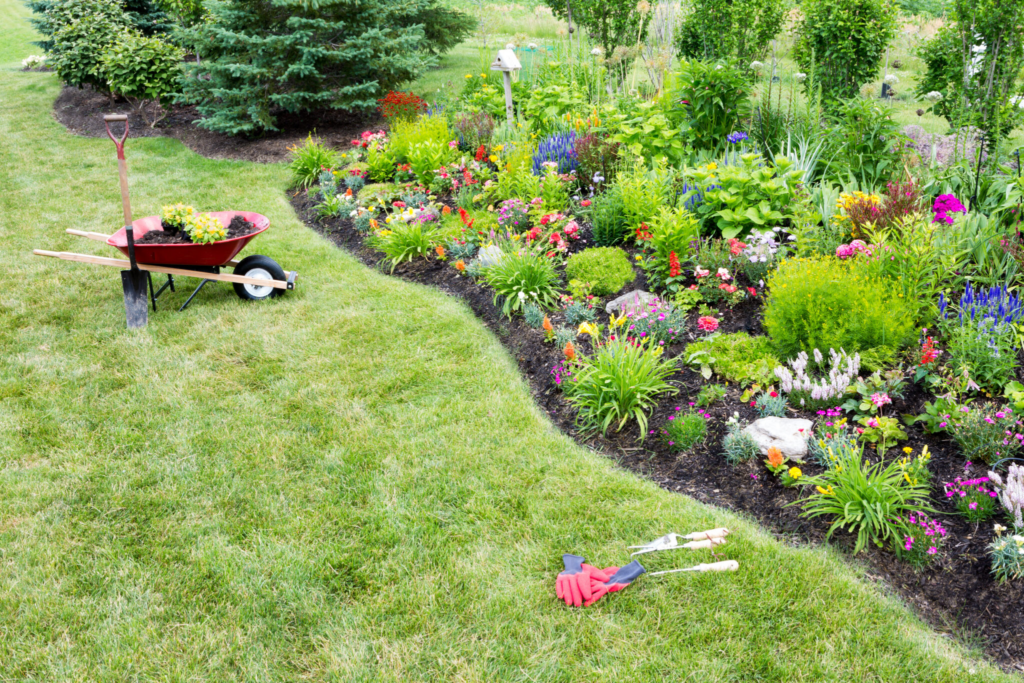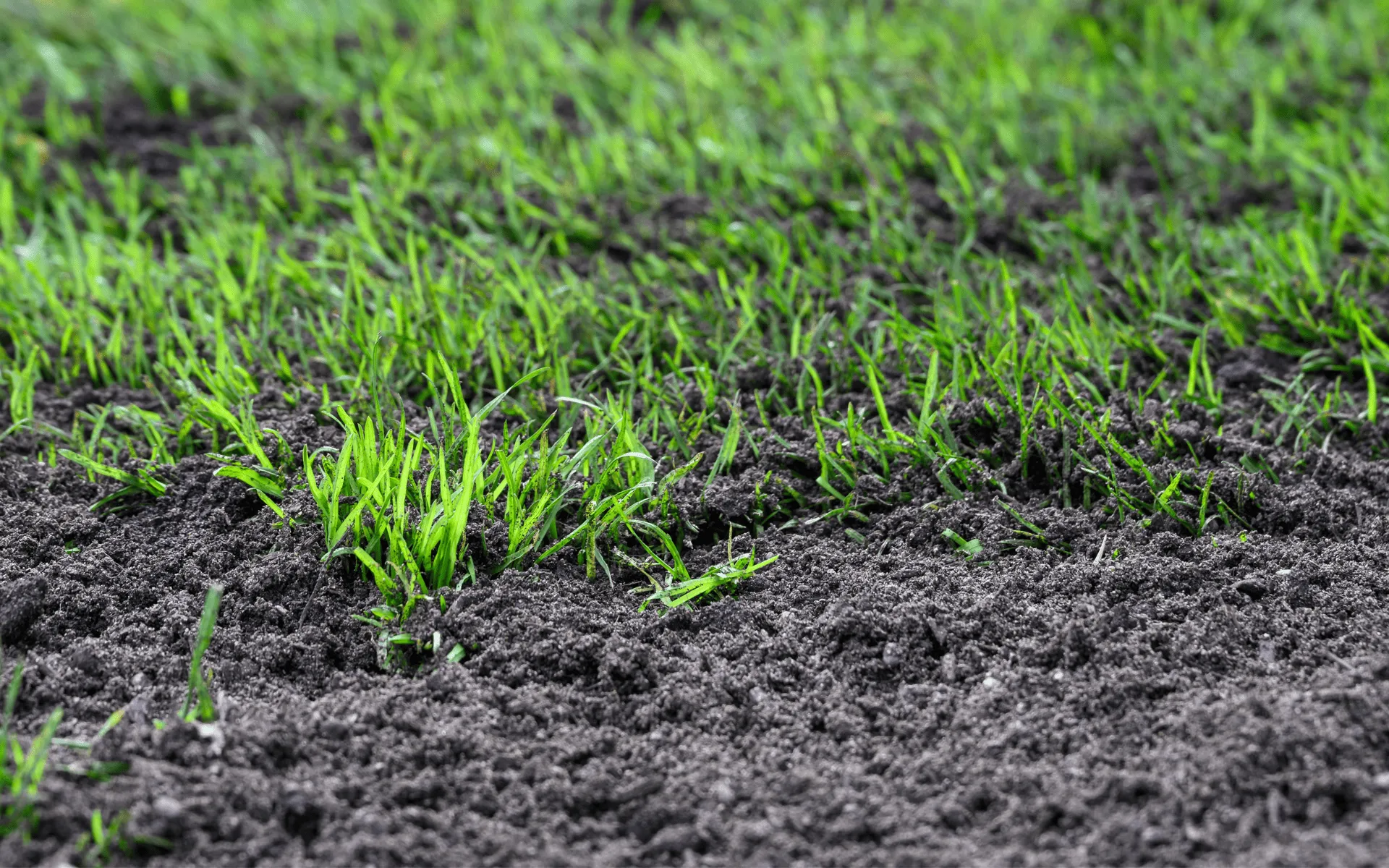Maintaining a lush and healthy lawn is a year-round commitment, but the transitional seasons of spring and autumn are particularly crucial. These periods offer the perfect conditions to prepare your lawn for the extremes of summer and winter. Understanding the unique challenges and opportunities of these seasons will help you keep your lawn in top shape.
Spring Lawn Care Tips
Spring is the season of growth, and your lawn will need all the support it can get to thrive. Here’s how to make the most of this critical time.
1. Aeration: Give Your Lawn Room to Breathe
Aeration involves perforating the soil with small holes to allow air, water, and nutrients to penetrate the grass roots. This process helps alleviate soil compaction, which can suffocate the roots and prevent your lawn from accessing the essential nutrients it needs to thrive.
Spring is an ideal time for aeration, particularly if your lawn has been subjected to heavy foot traffic over the summer. The soil is often more pliable, making it easier to aerate, and your lawn will quickly recover from the process, setting it up for strong growth.

2. Fertilisation: Feed for Growth
Fertilising in spring is crucial as it provides your lawn with the nutrients it needs to support its rapid growth phase. Choose a fertiliser that’s high in nitrogen, which promotes healthy, green leaf growth. Slow-release fertilisers are particularly effective as they provide a steady supply of nutrients over time, ensuring your lawn remains nourished throughout the season.
Applying fertiliser early in the spring will give your lawn the best chance to absorb nutrients as it comes out of dormancy. Just be mindful of the weather; it’s best to fertilise just before rain or water the lawn thoroughly after application to ensure the fertiliser is absorbed into the soil.
3. Weed Control: Stay Ahead of the Weeds
Weeds can quickly take over your lawn if left unchecked, especially in spring when they are most active. A pre-emergent herbicide applied in early spring can prevent weed seeds from germinating, giving your lawn a head start.
For those weeds that do manage to sprout, spot-treat them with a selective herbicide. Be careful not to use a non-selective herbicide, as this can damage your grass as well. Regular mowing can also help keep weeds at bay by preventing them from going to seed.
4. Mowing: Set the Right Height
As your lawn starts to grow more vigorously in spring, you’ll need to start mowing regularly. However, it’s important not to cut the grass too short. A good rule of thumb is to remove no more than one-third of the grass blade in a single mow. This helps maintain a strong root system and prevents stress on the grass.
Additionally, keeping your mower blades sharp is crucial. Dull blades can tear the grass, leaving it more susceptible to disease and pests.
Autumn Lawn Care Tips

Autumn is all about preparing your lawn for the cooler months ahead. While your lawn’s growth will start to slow down, this is the time to strengthen it and protect it from the winter chill.
1. Overseeding: Fill in the Gaps
Overseeding is the process of spreading grass seed over your existing lawn to thicken it up and repair any bare or thin areas. Autumn is the ideal time for overseeding because the cooler temperatures and increased moisture provide the perfect environment for new grass to establish without the intense heat of summer or the frosts of winter.
Choose a grass seed mix that’s suitable for your climate and lawn type. After spreading the seed, lightly rake it into the soil and keep the area moist until the new grass has germinated.
2. Fertilisation: Prepare for Dormancy
While spring fertilisation focuses on growth, autumn fertilisation is all about building strength. A fertiliser with a higher potassium content is ideal for this season as it helps strengthen the grass roots, making them more resistant to the cold and frost.
Apply the fertiliser in early autumn so your lawn has time to absorb the nutrients before winter sets in. Like with spring fertilisation, ensure you water the lawn after application to help the fertiliser reach the roots.
3. Leaf Management: Keep Your Lawn Clear
Autumn leaves can quickly accumulate on your lawn, and while they may look picturesque, they can cause problems if left to sit. A thick layer of leaves can block sunlight, trap moisture, and create a breeding ground for disease.
Regularly raking or using a leaf blower to remove leaves from your lawn will help prevent these issues. Alternatively, you can mulch the leaves with your mower and spread them back onto the lawn as a natural fertiliser. Just be sure the mulch is fine enough that it doesn’t smother the grass.
4. Adjust Mowing Height: Time to Ease Off

As the weather cools, your lawn’s growth will slow down, and you won’t need to mow as frequently. However, it’s still important to keep the grass at a healthy height. Gradually raise your mower blades so that you’re cutting the grass a little higher than in summer.
Longer grass blades are better able to photosynthesise, which helps the grass store energy in its roots for the winter. Additionally, slightly taller grass is more resilient against the cold and can provide some insulation for the soil.
Conclusion: Year-Round Lawn Success
By focusing on the key tasks of aeration, fertilisation, weed control, and mowing during spring, and overseeding, fertilisation, leaf management, and adjusting your mowing height in autumn, you can ensure your lawn stays healthy and vibrant year-round. Avoiding common mistakes like overwatering, ignoring soil pH, and neglecting pest control will further enhance your lawn’s resilience.










